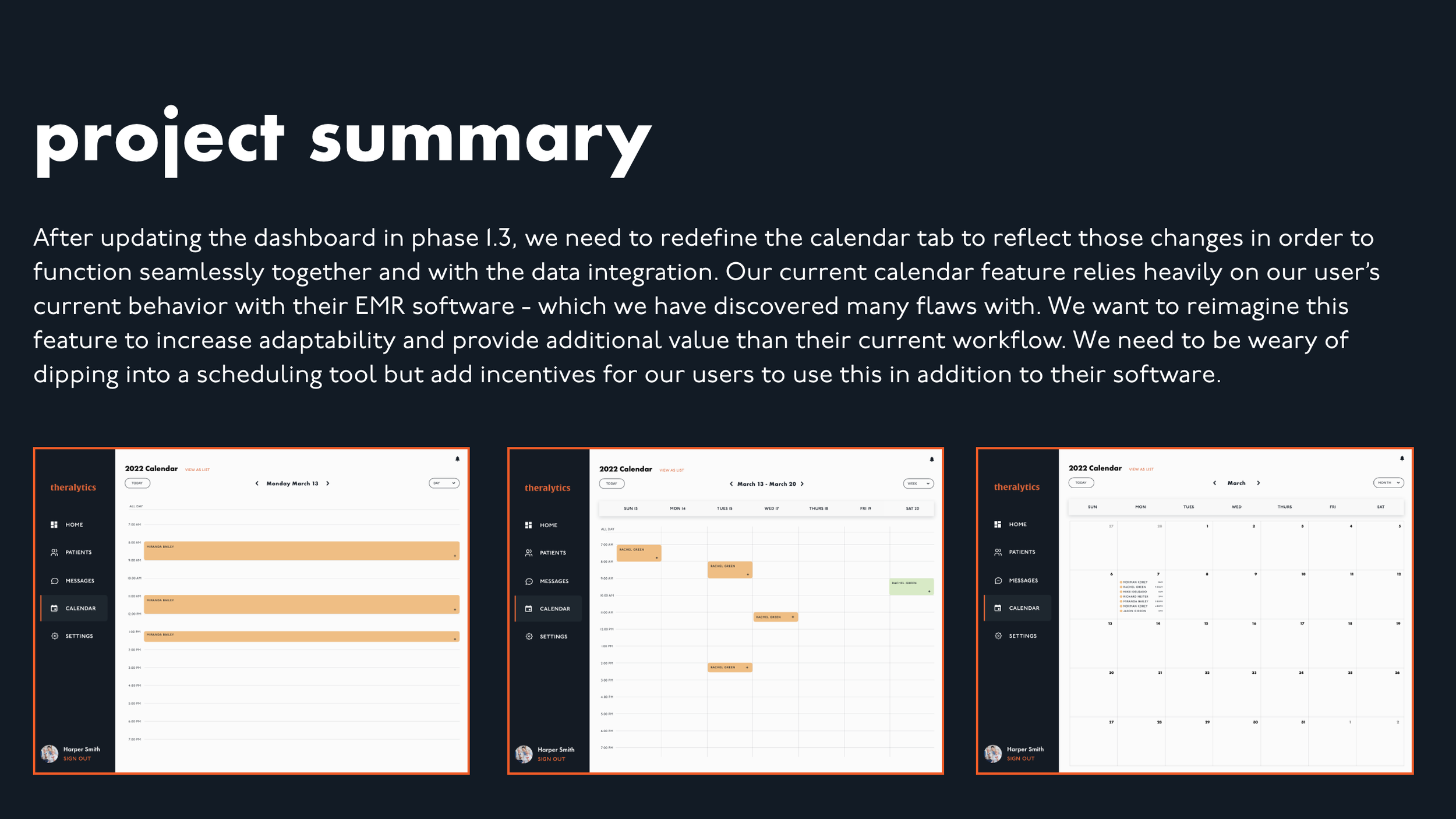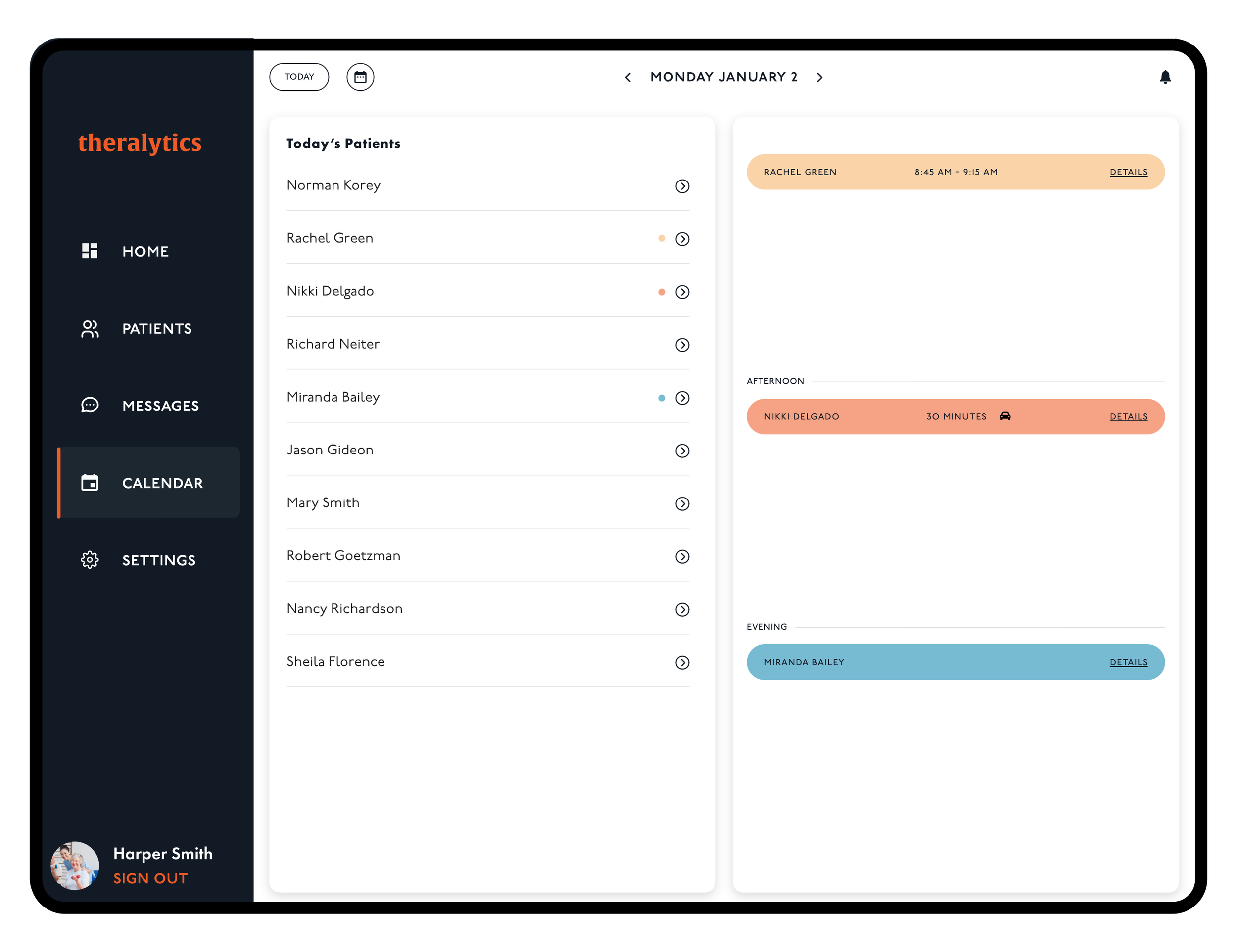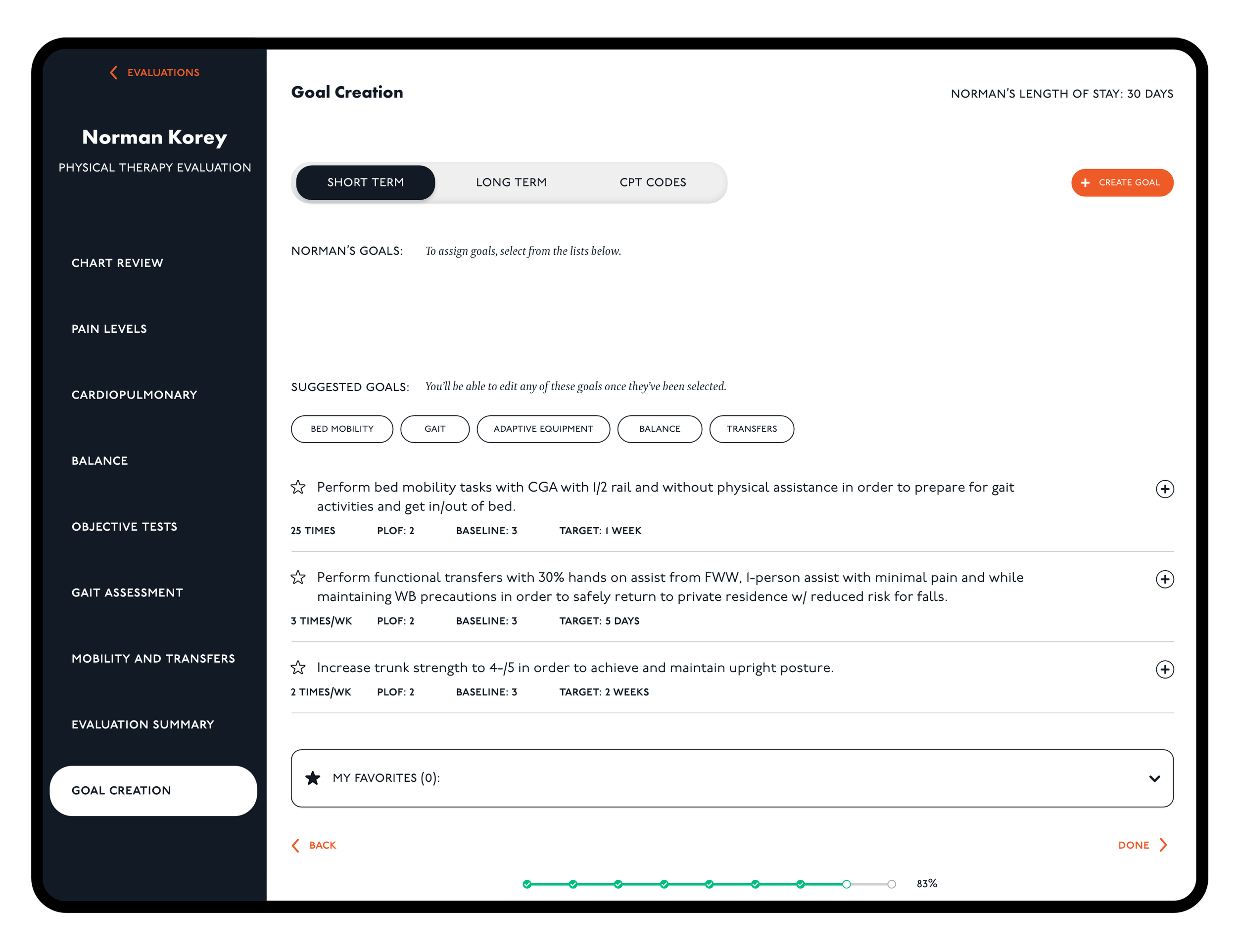theralytics: data management for skilled nursing facilities
roles: research, user flows, design system, ux design lead
team: ux designer, ux strategist, product manager
scope: mvp to product launch
tools: adobe xd, figjam, jira
product overview
As a founding employee, I was given the opportunity to work with a small team and build this product from the ground up. The initial task was to create a predictive analytics tool to generate better patient outcomes in post-acute care. Our mission was strictly patient-driven. While that still remained at the foundation of our work, we had to adapt to how deep the problems stemmed. So we started with the therapists. Our goal was to support rehabilitation therapists by creating tools to support them in focusing more on what really matters: patient health. context
problem exploration
We discovered a lot of our user’s pain points derived from their current systems and electronic medical records. Their software was designed for accounting purposes, not for providing efficient care. In fact, it hasn’t even been updated since the early 2000’s. Health-tech in this space has been completely left behind. It was our mission to enhance their current process and create software made for clinicians.Theralytics addresses problems from different users who ultimately come to the same solutions. On one hand, we have the patients and their families; they are completely in the dark about their progression of care. There is no clear path. On the other hand, we have therapists working between multiple different softwares, preparing extensive documentation and seeing 10-15 patients a day. All the while their current systems are collecting unstructured data.solutions
We determined that in order to have precise predictive analytics, we need to own and provide better data. We didn’t want our software to just be another player, we wanted to change the game. With a crucial problem at hand, we are highlighting three main solutions.1. one stop shop for daily therapist needs
2. responsive organizational tool for patient preparation
3. decreased workload burnout through guided decision-making
user research
defining our scope
With the initial concept, we thought we were providing a simple solution. But as we dove into the nitty gritty, we realized there was much more involved (shocker, I know). Here are some key tactics our team carried out.12 week pilot program with our first customerUsability testing features through MazeUser interviews with 12 directors of rehabilitation20 hours of moderated testingAnalyze interview report for design decisions
design process
As half of the design team, it was crucial to set a foundational process. Our approach was inspired by the double diamond method which goes as follows: discover, define, develop and deliver. As we continued to learn more about our users and integrate with databases we were constantly reimagining the possibilities. below is our ux documentation deck for the calendar tab











